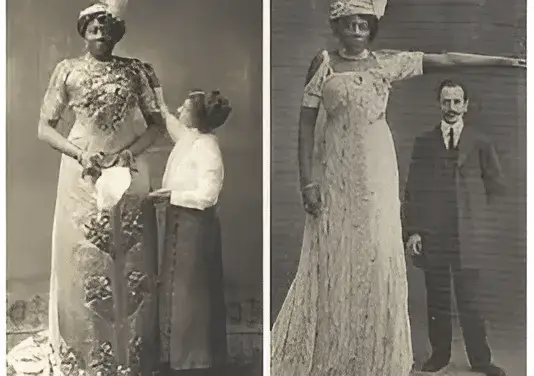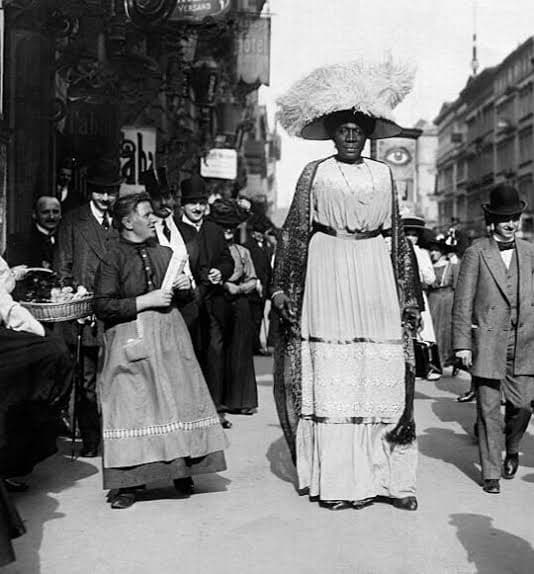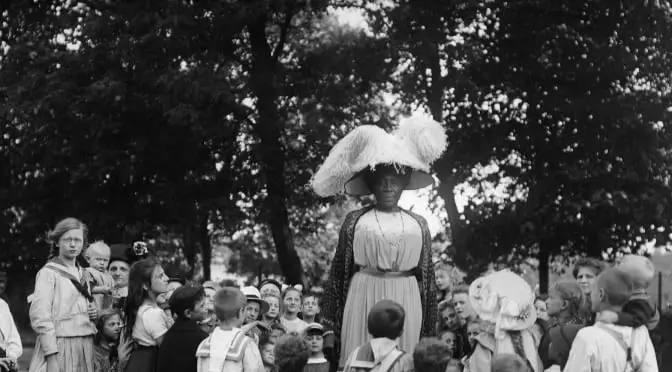Meet Abomah the African Giantess” And Her Illustrious Career As The Tallest Woman In The 19th Century
There have been many women with extraordinary heights in the history of mankind, but Ella Williams is truly a special case among them.
Ella Williams, known to the world as “Abomah the African Giantess,” quite literally, as she stood tall not just in stature but in the annals of history as one of the most intriguing figures of her time. Born in South Carolina in the late 19th century, she was celebrated for her remarkable height, reportedly standing at an astounding 7 feet 6 inches, putting every grown man beside her to shame.

Born into a family of freed slaves in South Carolina in 1865, Williams experienced a growth spurt after battling malaria at 14, which many argued was the sole factor, though no scientific proof was used to back this theory up.
Many other women would be afraid and insecure if they shared the same height, but Williams clearly knew how to used it to her own advantage. She turned her incredible height and strength into a celebrated international career in the late 19th century.
In 1896, she caught the eye of showman Frank C. Bostock, who whisked her away on a European tour under the guise of being a member of the fearsome Dahomey Amazons from the Kingdom of Dahomey. Adopting the stage name Mademoiselle Abomah, she dazzled audiences from Abomey’s royal capital, navigating the globe more freely where her uniqueness as the tallest woman on Earth was celebrated, rather than scorned due to the racial prejudices back then in the United States.

Over a career spanning three decades, Abomah captivated crowds from Europe to Australia, and from South America to the Caribbeans with her majestic presence and an exquisite wardrobe that accentuated her regal stature.
Her travels included memorable performances in English variety halls, a successful Australian tour in 1903, and numerous appearances across New Zealand and South America showcasing her height alongside stories of her supposed African royal lineage to captivate and entertain audiences. She was also a highlight at iconic venues like Coney Island and even graced stages with the great Barnum and Bailey Circus, one of the biggest circuses in the industry, by 1918. She then became one of the most recognized and celebrated performers of her era.

However, the onset of the First World War in 1914 saw Abomah cutting her European tours short to return to the United States, where she continued to perform with Ringling Brothers, Barnum & Bailey, and at Coney Island into the 1920s. Eventually, Abomah stepped away from the limelight, leaving behind an incredible legacy of defying the odds and captivating the world with her enormous charm.
Despite her towering presence in the world of showbiz, little is known about Williams’ life outside the spotlight. There wasn’t much information about the “giantess” after the 1920s, though some sources claimed that she stayed with the circus until her mid-sixties. Her career, like those of many sideshow attractions of the time, waned as the public’s interests shifted, and the era of sideshows and human oddities came to a close.
Ella Williams passed away in relative obscurity, her death date and place as elusive as many details of her life. Yet, “Abomah the African Giantess” remains a fascinating subject of historical curiosity, a reminder of the complexities and challenges faced by those who lived their lives on the edges of society’s norms.

